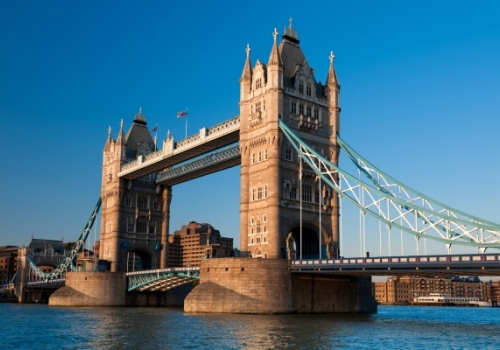
The last decade has seen some major challenges for the superyacht industry. COVID, the war in Ukraine, environmental concerns and the emergence of NextGen buyers have brought about significant changes. As we grapple with the impact of geopolitics, climate change and shifting demographics over the last five to ten years alone, we can’t help but wonder what the future has in store. Who or what will determine trends over the next decade? Will technology set the agenda for further change, or will sustainability dictate the shape of things to come? Can we expect tomorrow’s superyachts to be designed by AI robots? Will marinas struggle to accommodate a global fleet of ever-growing yachts, or will the pressure to be greener curb the desire for bigger and better?
In search of answers, Lorna Titley at Quaynote Communications asked speakers at the company’s next conference, The Future of Superyachts, for their predictions. First up is Ed Ewer, CEO at Superyacht Recruiter, a leading shoreside recruiter who believes the move towards more environmentally-friendly yachts will be in the hands of new owners. “The change in the buyer demographic will, I hope, start to drive cleaner yachting,” Ed explains. “Younger buyers are now pushing harder for greener tech and this could well lead to a small boom in large sailing yachts, given the much reduced CO2 outputs associated with them and the general overall experience the owner will receive.”
Indeed, consumers are key drivers in meeting sustainability goals across many industries. Superyacht buyers, however, could be said to face a double whammy. “Superyacht owners remain high profile figures, many representing corporations marketing to consumers,” explains Andrew Grant Super, MD at Berkeley Rand. “To ignore their contribution to sustainability will be at their own PR-profiled peril unless they’re prepared to become ‘irrelevant’, as Gen Z would describe them.” In other words, big company bosses who are also yacht owners could find both their personal and corporate reputation in jeopardy if they don’t adopt a sustainable approach to running their organisations and their superyachts.
The environmental buck does not stop with owners, of course. Andrew points to investment institutions and banks who need to demonstrate a meaningful contribution towards a sustainable future. Lenders are under increasing scrutiny from shareholders to support what he describes as “sustainable luxury investments, with yachting being a key area of focus.”
If the superyacht industry came late to the table in embracing sustainability, then its approach towards that other universal engine of change, technology, has been patchy. Although onboard devices and software applications for guests and crew are now readily available, the opportunities they create are often realised by suppliers outside the industry. “Technology is appearing everywhere now,” comments Andrew. “Most suppliers servicing yachts are inadequate and naive in these areas, leaving it to outsiders to come in and steal that space.”
There’s a lot of discussion currently about Artificial Intelligence (AI) making working lives easier by taking over some mundane tasks or by entire jobs being carried out by robots, making their human counterparts redundant. Ewer reports that demand for shore-based superyacht employees continues to outstrip demand. He expects this situation to continue “unless yards start moving to use robots/automation and designers start relying heavily on AI.”
As we saw during COVID, technology can only take you so far. Zoom calls don’t deliver networking experience, for example, which is so vital to the superyacht industry. Joanna Drysdale, Manager of Underwriting at MHG in the Isle of Man, also points out the pitfalls of selling complex products online. “Crew insurance plans differ a lot more in terms of style and wording than hull policies,” she explains. “Some are entirely off-the-shelf but the subtleties of crew cover, particularly comprehensive stuff, makes it difficult to sell online in an automated fashion.” Joanna sees technology fall short of the mark when it comes to some types of insurance claims too. “You’re dealing with people about their own health – apps are great for straightforward reimbursements but totally useless for more complex claims involving serious diagnoses, troubleshooting and the possibility of sick pay,” she notes.
Crewing is a pertinent topic when we look at the future of superyachts. Dr Emma Gillett DC of Crew Solutions believes that specialist feedback tools will resolve “almost all that currently ails the industry around crewing, allowing management to have constant eyes on yachts.” Having become a yacht stewardess in her fifties, Emma typifies what she calls the vintage effect. “It’s time to onboard mid or late career talent,” she states.
It remains to be seen whether middle- or senior-aged applicants will be the panacea to staffing and recruitment challenges in the superyacht industry. Ed sees demand exceeding supply across all sectors, leading to continued talent shortages in the future. “I don’t see this changing any time soon,” he asserts. “We expect to remain busy long term with demand for specialist help being key to employers meeting their clients’ requirements.”
Amongst those who pursue a career in yacht crewing, many appear to be living the dream, travelling the world and earning big bucks. However the financial future for some yacht crew may turn out to be less rosy. As Joanna Drysdale explains: “amassing a big pile of money in the bank is all well and good, but even very wealthy crew members can get a shock when they leave the industry,” she warns. “They find it’s difficult or impossible to get back into their home country’s social system. A serious diagnosis could end your career and your ability to ever work again, and if you haven’t been paying your social system contributions or arranged your own private medical insurance then you end up having to pay all of your medical bills out of pocket with no income.” Joanna’ wish for the future is good planning for crew. “If I could change anything about today’s superyacht crew, it would be to encourage them to pay the social system contributions or get that domestic insurance sorted now. You never know when your yachting career will end.”
What of the financial futures of owners themselves, the ultimate drivers of the superyacht industry? If the spend levels of today’s owners are anything to go buy, with the unprecedented demand for yacht experiences alone exceeding £100m per annum, then tomorrow’s superyacht world looks buoyant. What’s more, the next generation of owners want to enjoy the fruits of their success in different ways. As Andrew, who chairs The Future of Superyachts conference in London on 29th June explains: “Luxury and 5-star treatment were 1990s phrases.” New owners already expect these as a matter of course. The next generation “Crypto kids, next gen old money, tech titans, rock stars and global sports figures in addition to royalty and sailing enthusiasts” are looking for much more. “We need to become younger, cooler, more relevant, in tune with this generation, to survive and grow exponentially as much as a service industry as design and build,” he concludes.


Post your comment
You cannot post comments until you have logged in.
Login to post a commentComments
No one has commented on this page yet.
RSS feed for comments on this page | RSS feed for all comments